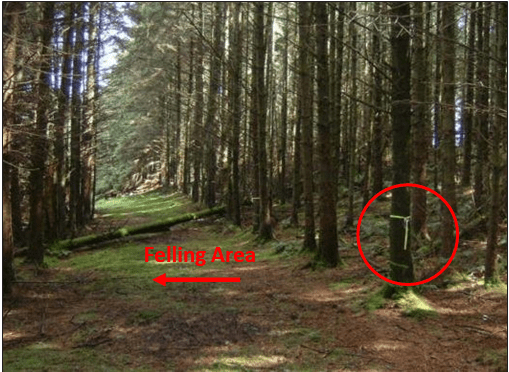It is vital on all sites that we recognise and mark all These may be the edge of the felling area, environmental sensitivities, overhead power lines, or specific trees to be retained. The boundaries must be marked well ahead of operations. We have found boundaries in the past that weren’t marked, which resulted in the boundaries being crossed as operations got ahead of the work plan or it had been changed.
While the conventions for marking are not standardised across the industry there are a number of critical factors for markings on each site, these include:
- Markings used must clear and understood by all on site. Using paints of similar colours to mark different things are easily mistaken.
- Markings must be A small piece of biodegradable tape tied to every tenth tree is likely to be missed. Consider the operators view when they are working.
- Marking must be Don’t change colours, or from paint to tape halfway through the site.
- Markings are to be on the trees to be retained, e. the opposite side of a ride or watercourse.
- Use paint and tape where visibility is critical.
Finally, walk the site with operators to ensure everyone on site understands the boundaries and the markings used.

Above: Boundary marking at DBH level. Good frequency of marking as you are able to see at least two of the last marked trees.

Above: Boundary marking at ground level due to heavy branching. Note the use of Tape & Spray Paint.

Above: Spray Paint used to mark the boundaries.

Above: Marking a ride boundary opposite the felling area.


